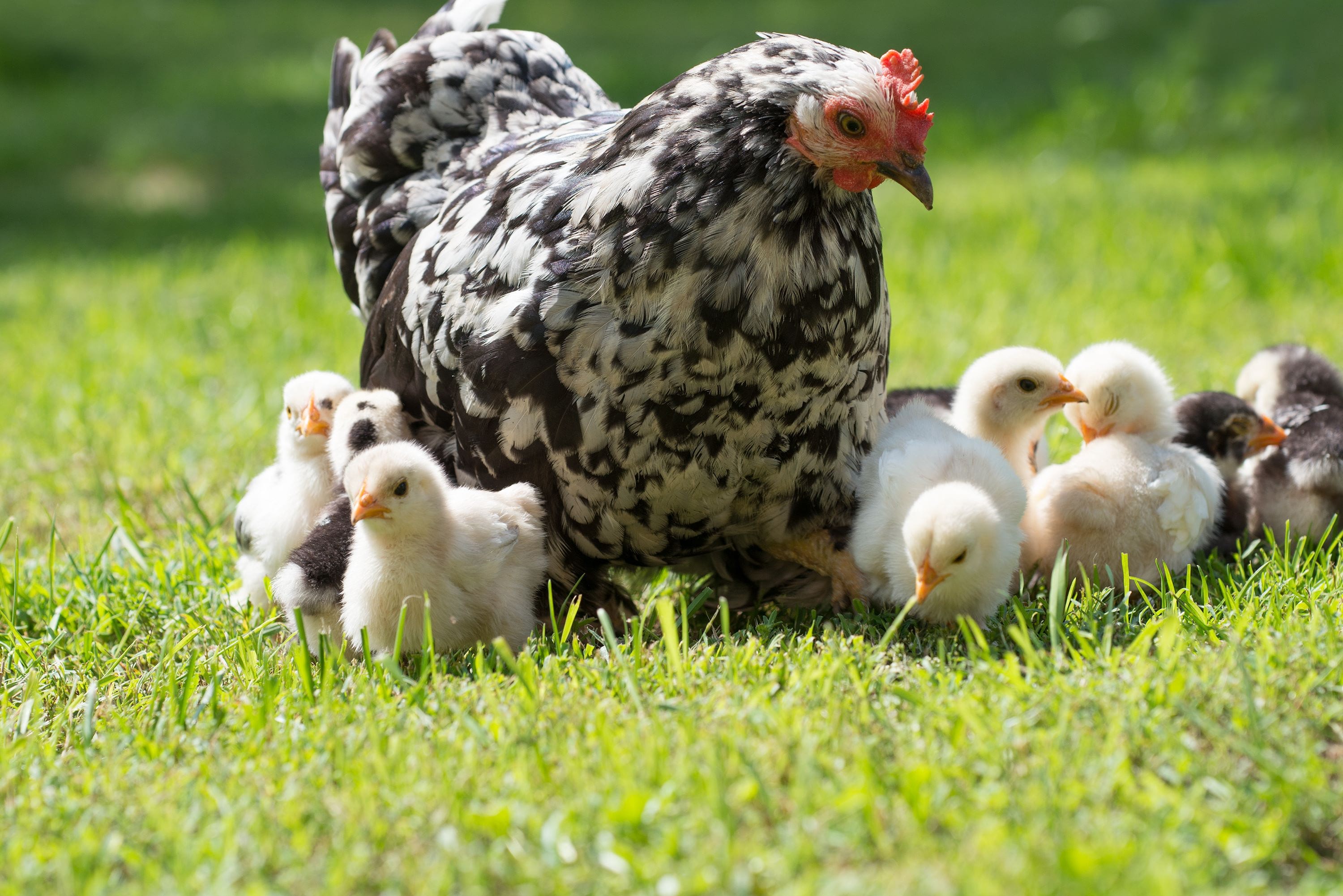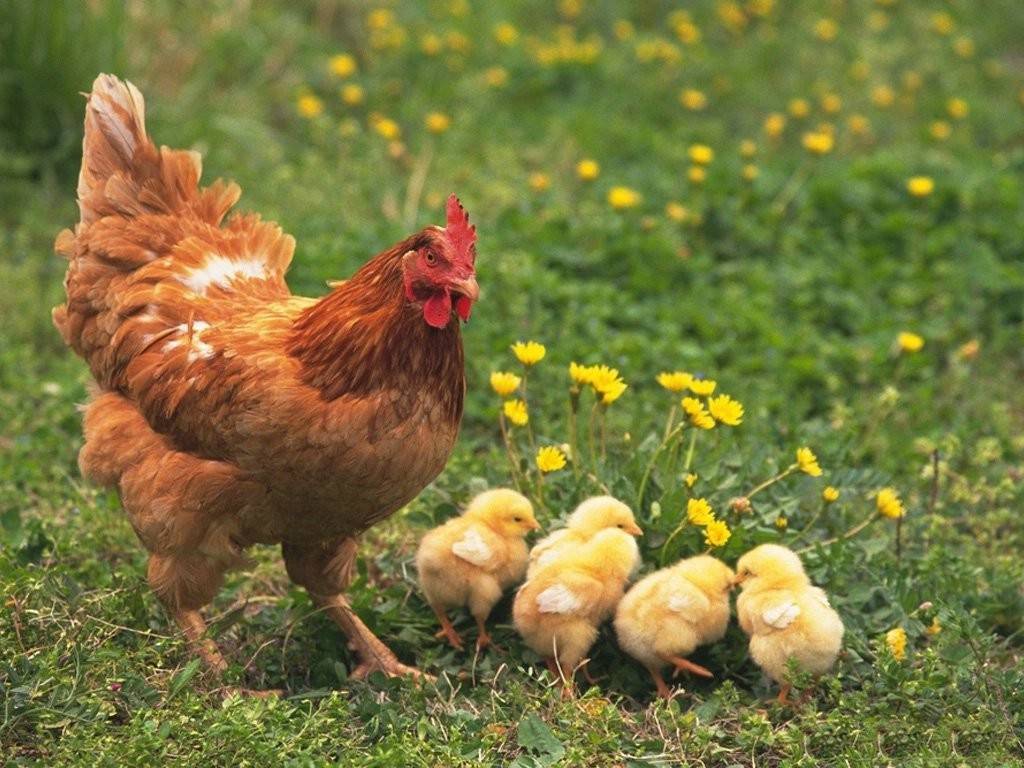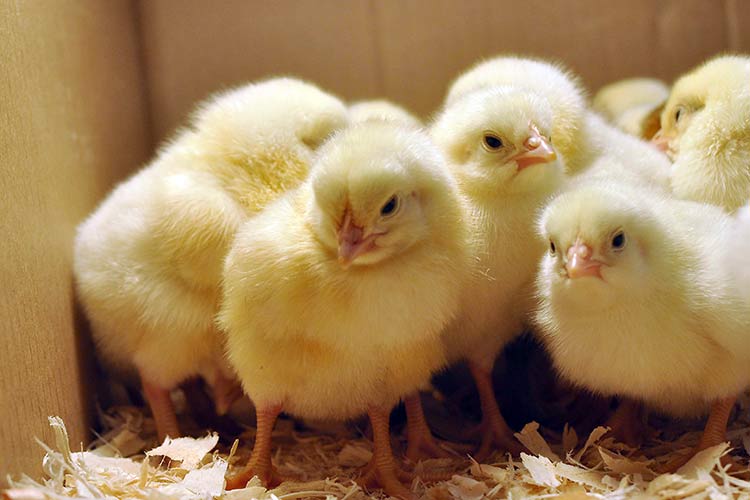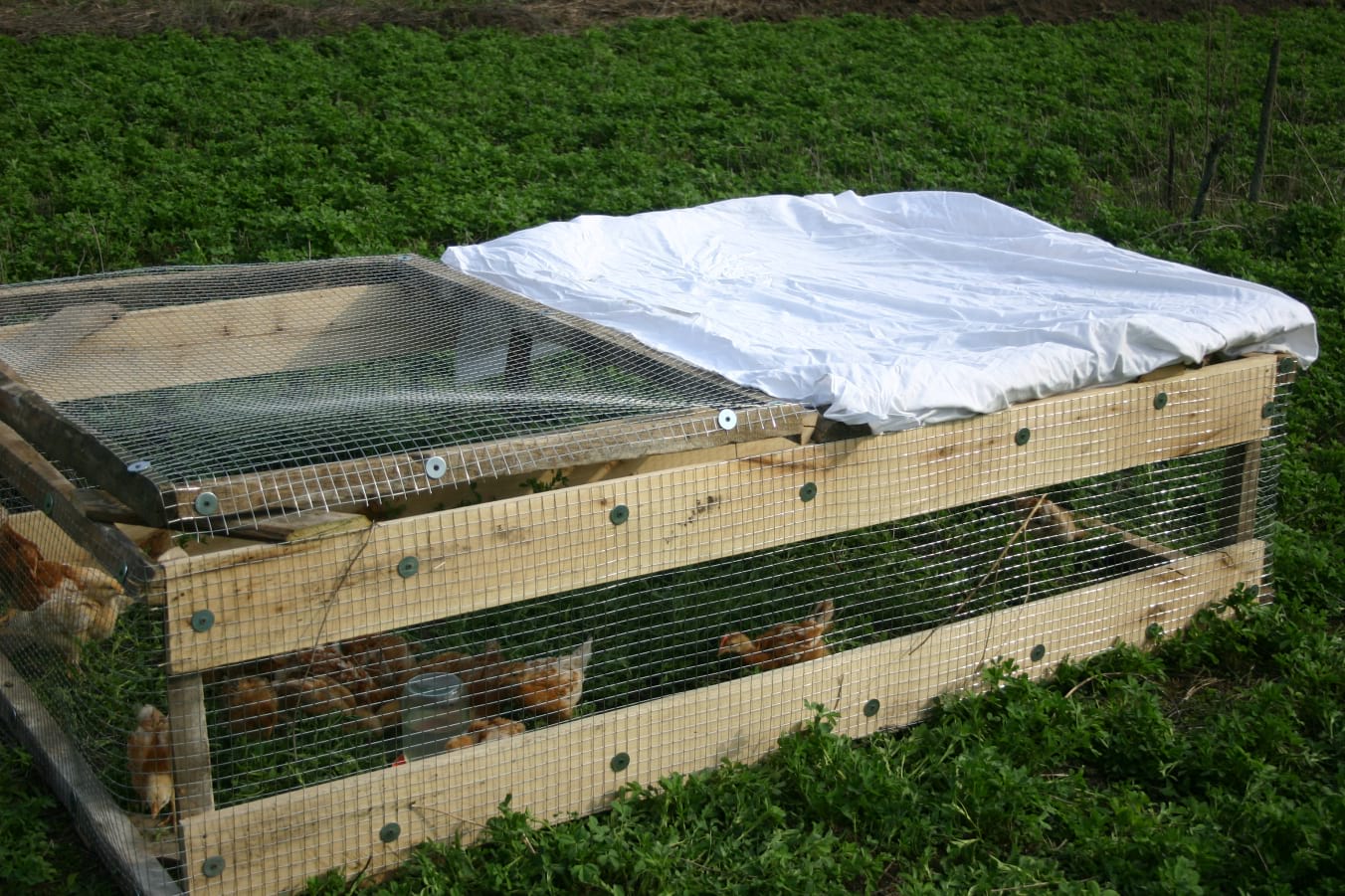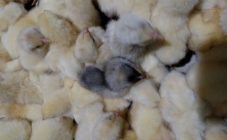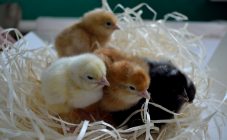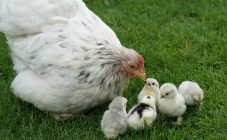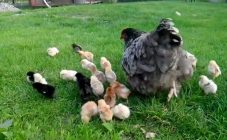Content:
Fresh air is essential for normal chick development. The constant keeping of chicks indoors is very harmful to their health. You just need to know at what age you can release chickens on the street.
How to care for chickens
At the very beginning of their life, chickens are very susceptible to various diseases. They need good quality nutrition and careful care.
Required need to give Attention so moments:
- Optimal indicators of temperature and light conditions in the room;
- Timely intake of high quality feed;
- The obligatory presence of boiled warm water in the drinking cups;
- Correct conditions of detention.
It is necessary to ask about the rules of caring for them at home even before the birth of chicks. After all, the method of appearance, the direction of growing a chicken is of no small importance.
If the babies appeared naturally from under the hen, then she herself will take all the care of the chickens. The chicken mother needs to return the children after drying. But, if the chicks are incubator, then the farmer will have to take all the care of them. Care for such chickens should be much more careful.
Newborn chicks must be placed in a box or box, and large sawdust or cloth should be placed on the bottom.
Correct thermoregulation in newborn birds will form only in a month, so the farmer will have to monitor the temperature in the room himself until that time. Otherwise, chicks can get sick from hypothermia.
What temperature recommended create and save at premises:
- Day-old chicks freeze quickly, so the temperature in the box should be as close as possible to the incubator - 34 degrees Celsius. This indicator should be gradually lowered by 3 degrees. When the temperature reaches 21 degrees, you need to stop lowering, since this mode is most suitable for the development of chicks. If you neglect this rule, then the chickens will be fatal. This is especially true for broiler chickens, they are most sensitive to hypothermia;
- It is possible to determine whether the temperature regime is suitable for the chicks by their behavior. The mode is selected correctly if the kids are active and feel normal. If the chickens stand together and huddle together, it means that they are clearly cold, the heating should be increased. Babies feel hot if they crawl in corners, away from the lamp, with their beaks open. In this case, it is time to reduce heating.
The light regime is also very important for babies, so the housing for them should not only be warm, but also well lit. The lamp (infrared) is not turned off on the first day of the chicks' life. From the 2nd day you can take a short break for the "night", no longer than 15-20 minutes. The duration of the break is gradually increased, accustoming the chicks to the standard daytime regimen.
You also need to correctly formulate a diet for chicks. It should be composed of grains, protein foods, vitamins and minerals. After all, only a balanced diet will help grow healthy chickens from yellow lumps, which will produce the expected number of eggs (if the chickens are of the egg direction).
When chicks can be released outside
Novice poultry farmers often do not know when to take chickens outside so as not to harm them. It should be noted that the rules for walking chicks are not the same for everyone. The time when you can already walk the chickens depends on their breed.
First of all, egg breeds can be hatched. If the chicks are raised in the summer with the help of a mother hen, then she will control the time the chicks are on the walk. If the chicks are from the incubator, then the farmer needs to take out the babies himself (in the box) and control the time spent on the street.
At what age to walk
You can take out chicks outside on the 5th day from birth, at first only for 2-3 hours. The place should be sunny, no drafts. You also need to make sure that birds are out of reach of dogs and cats.
The walking time should be gradually increased. By the end of 2 weeks, chicks can be left outside for the whole day. To do this, they are transferred to a prepared chicken house. It needs to be well closed on all sides, from above to make a shelter from a net to protect it from predatory animals and birds.
When is it okay to take broiler chickens outside, because the situation is different with them? Broiler chicks are much weaker than usual, so they can only be taken outside at the age of 3 weeks.
At what temperature can you walk
Novice poultry farmers should be aware of the temperature at which chicks can be kept outdoors. Chicks can only walk outside at temperatures below 19 degrees Celsius. The best time for walking is late spring or early summer.
When to leave outside overnight
Newbies are worried about when you can leave chickens outside overnight. Thermoregulation of young animals is formed only a month, which means that it is not recommended to leave chicks outside at night before this period - they may not withstand the cold, freeze and get sick. Babies who are already a month old may well sleep on the street.
There is no doubt about whether monthly chicks can be left outside overnight. After all, young males and hens are able to withstand spending the night in a chicken coop on the street without additional heating when it comes to the warm season. In late autumn and winter, monthly chicks should spend the night in a heated room (18-19 degrees Celsius).
Recommendations of experienced poultry farmers
Farmers with experience say that initially when buying chicks from an incubator, you do not need to take weakened individuals. Otherwise, despite careful care and adherence to all the rules of walking, chickens with good health and good performance cannot be raised.
Healthy the chicken has the following features:
- Strong legs that help him keep his balance. The chick does not fall or stagger;
- The chick actively moves and orients itself normally in space;
- Reacts to sound and light;
- Pecks food;
- The umbilical cord should heal completely;
- The tummy should be soft and tight;
- The chick has normal stools, not runny;
- The beak is strong and clean, pink in color.
If there are weak chickens in the purchased young, they will most likely die soon. If they survive, they will lag behind in development from the rest of the chicks.
Here some more tips on how to keep your chicks safe:
- You need to protect them from direct rays of the sun. It is good when bushes and trees grow on the walking area;
- Stronger babies should be released into the street separately from weakened chicks;
- The walking area must be fenced;
- Chickens should not walk on wet grass until their fluff is replaced by feathers;
- Predators should not have access to the young animals' walking area;
- Very tiny chicks should not walk in windy weather;
- When transporting chicks, care must be taken that they do not freeze. You can put a heating pad (warm, not hot) wrapped in a cloth in a basket.
Only by observing all the rules for care and walking can one expect that the chickens will grow up strong and healthy.
